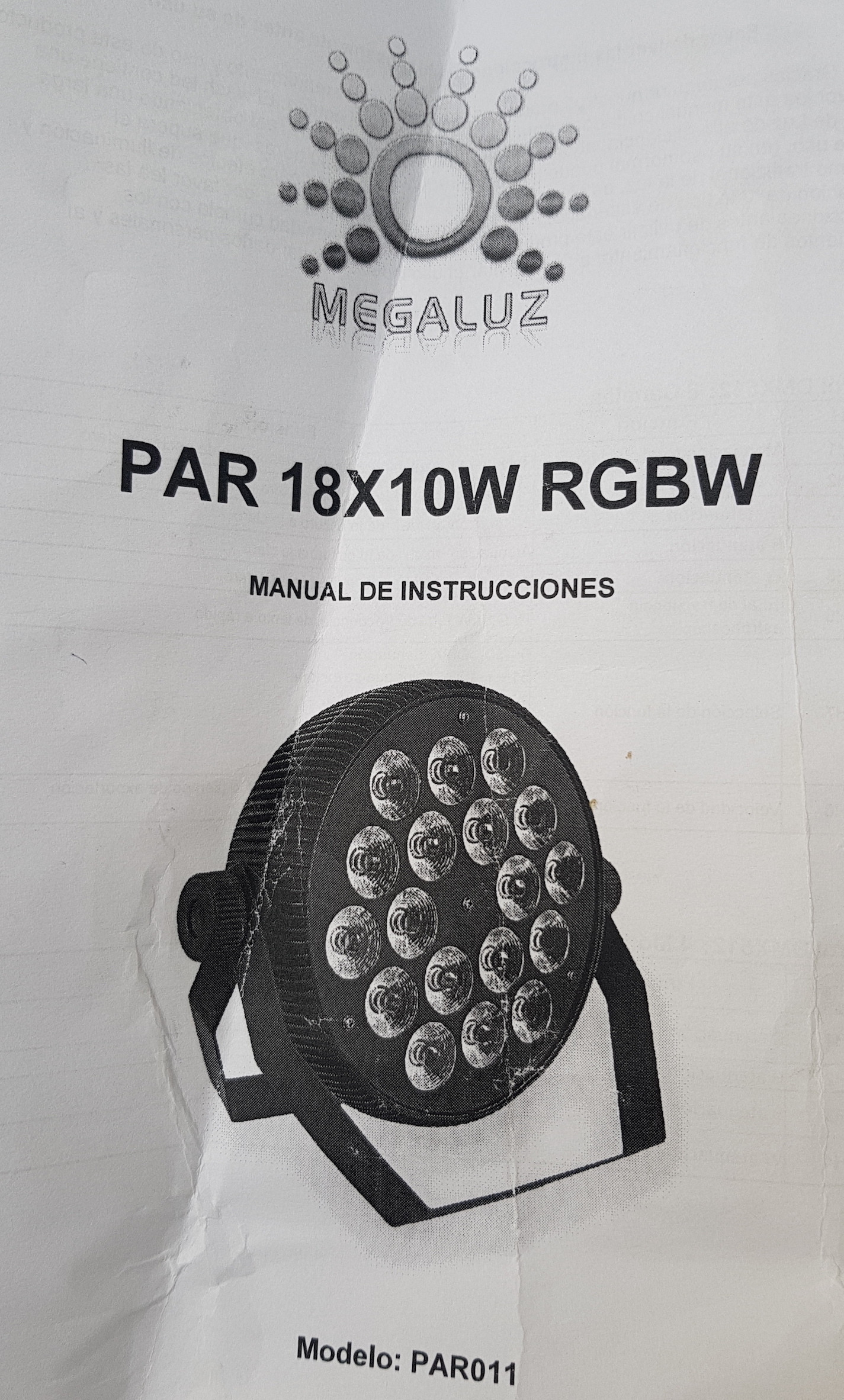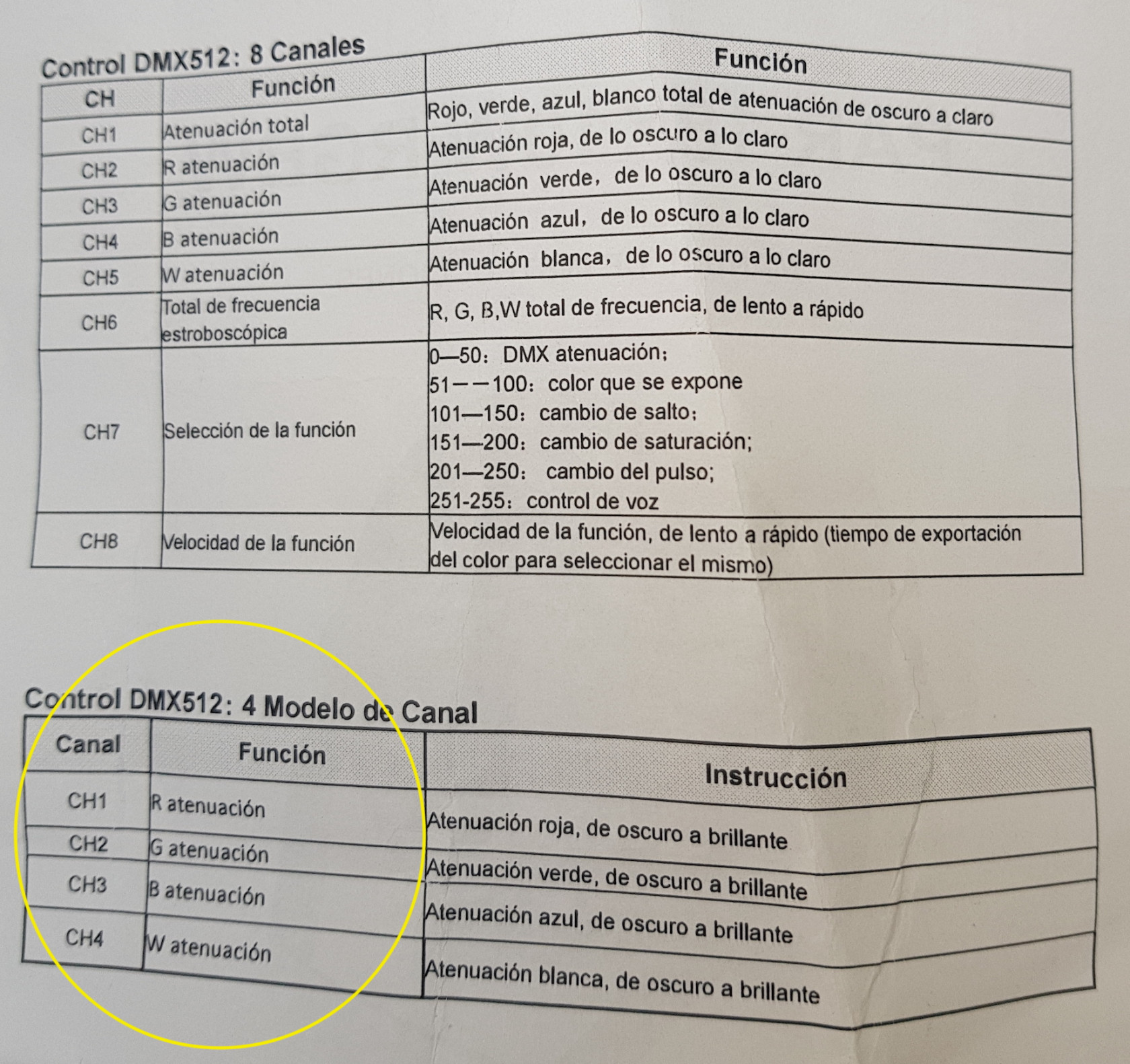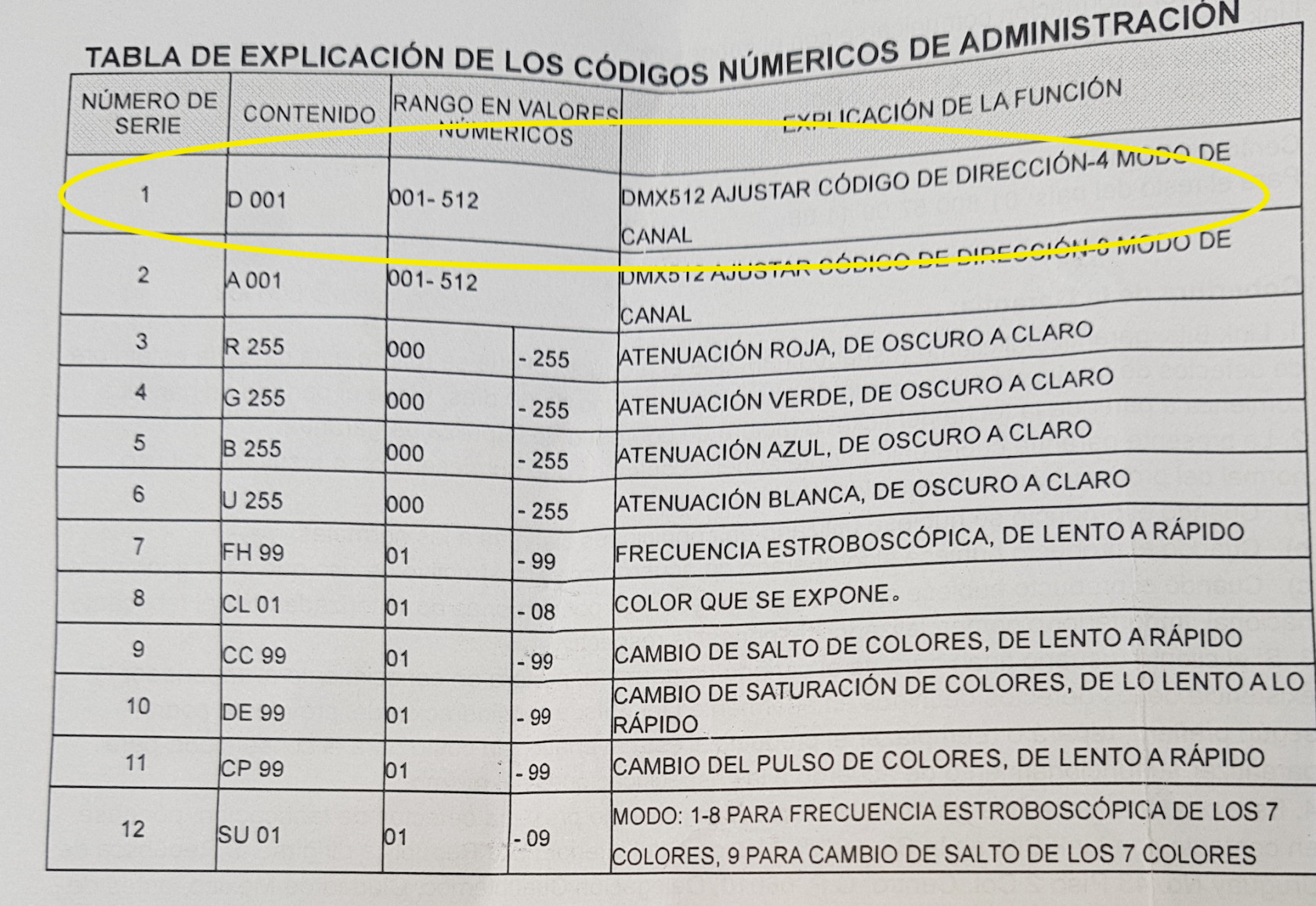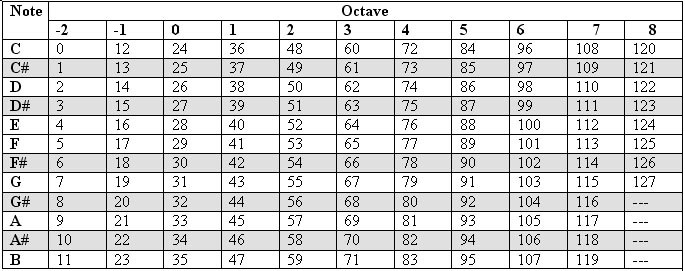Case Study - A Series of Generic LED PARs from Asia
We've all seen this sort of light for ~$30 via the usual sources. A customer wanted to control about a dozen of them, discretely. It made sense to document the setup in case the scenario is useful to others.
The first step is to figure out which DMX modes are available. Often these fixtures contain 3-channel (RGB) modes, 7+ channel (RGB + color fade + strobe, etc) modes and more. Typically in these situations, we pick the simplest mode first. Once this is stable, it's easy to work backwards.
(Yes, the instructions are in Spanish. But the gist is pretty clear.)
This fixture supports 4-channel (RGBW) and 8-channel modes:
So to get started, we'll choose 4 channel mode, since that's straight, simple control of RGB and white, without any 'master brightness' channels to worry about.
Next, the fixture must be set to 4 channel mode. Using the fixture's pushbuttons, we choose 'dXXX' where XXX is the start address. For easy of connecting to a MIDI system, set this address to 60 (middle C) for now:
Then, since the MIDI to DMX bridge maps MIDI notes (which are each numbered, range is [0 127] with middle C being 60, we know that there should be control of this fixture by playing notes like this:
Middle C Note #60 'Red' DMX Start address = 60
Middle C# Note #61 'Green' DMX start address + 1
Middle D Note #62 'Blue' DMX start address + 2
Middle D# Note #63 'White' DMX start address + 3Now, to control multiple fixtures discretely, they need to have start addresses which are offset by 4 channels. So setting the fixtures like this should work:
Fixture 1 Address 60
Control with Middle C, C#, D, D#
Fixture 2 Address 64
Control with E, F, F#, G
Fixture 3 Address 68
Control with G#, A, Bb, B
etc...
Note: there's no reason why the first fixture couldn't have its address set to 001, which can be accessed by the very lowest C note on the MIDI scale. However, on some keyboards / systems its a hassle to transpose octaves like this, so it makes things simple to start somewhere obvious, near the middle of the scale, and then work backwards for final production settings.




